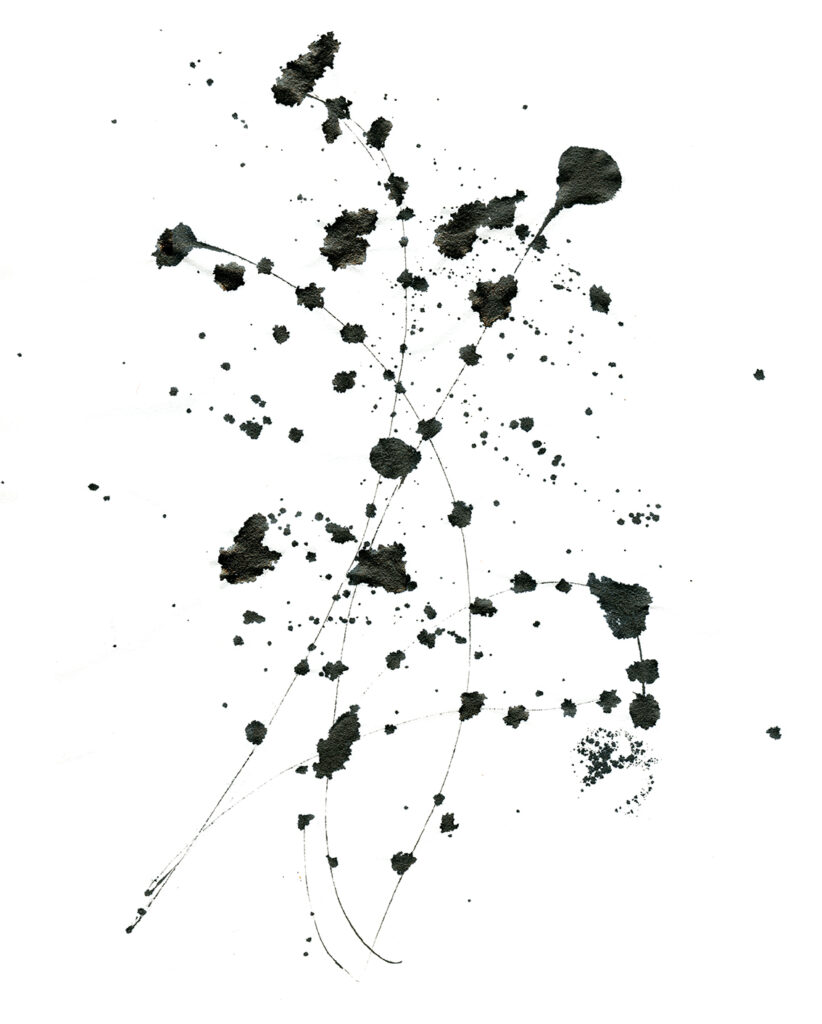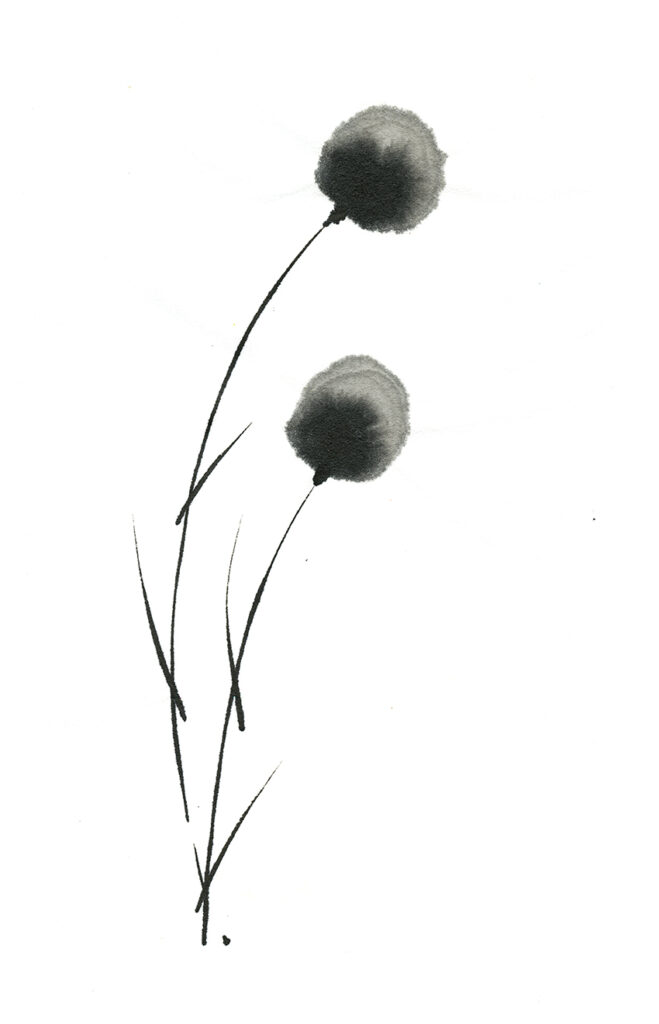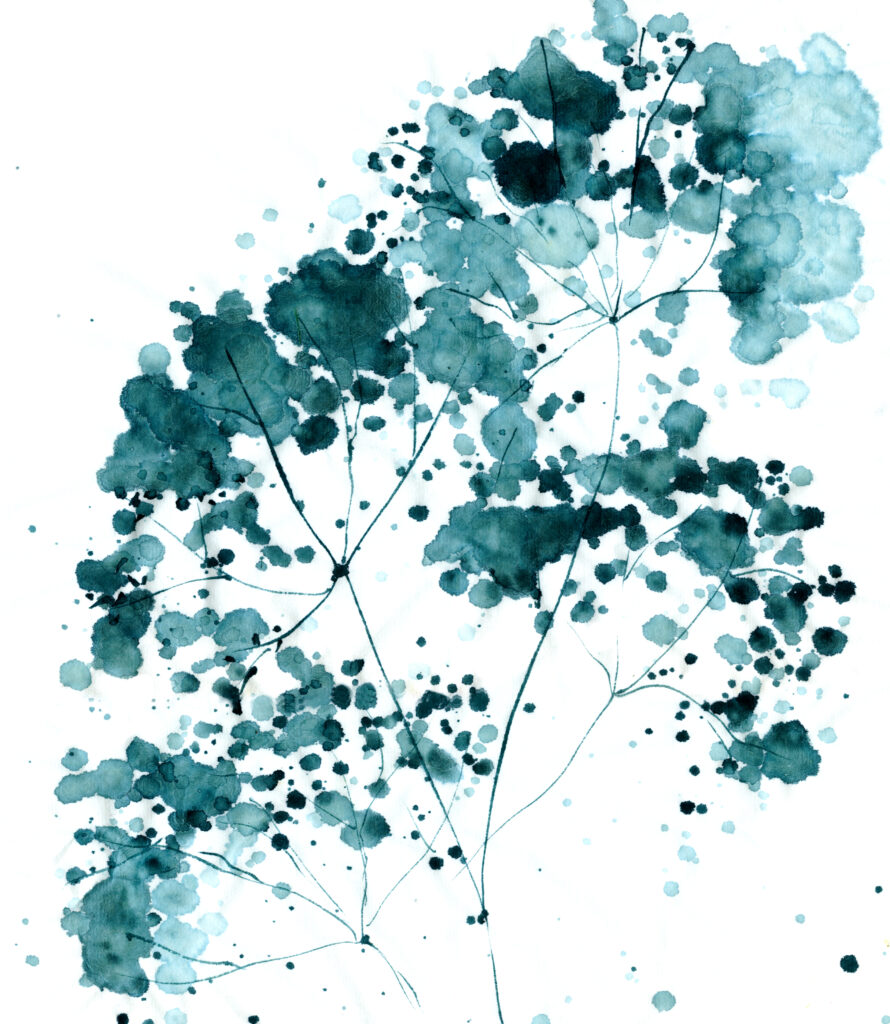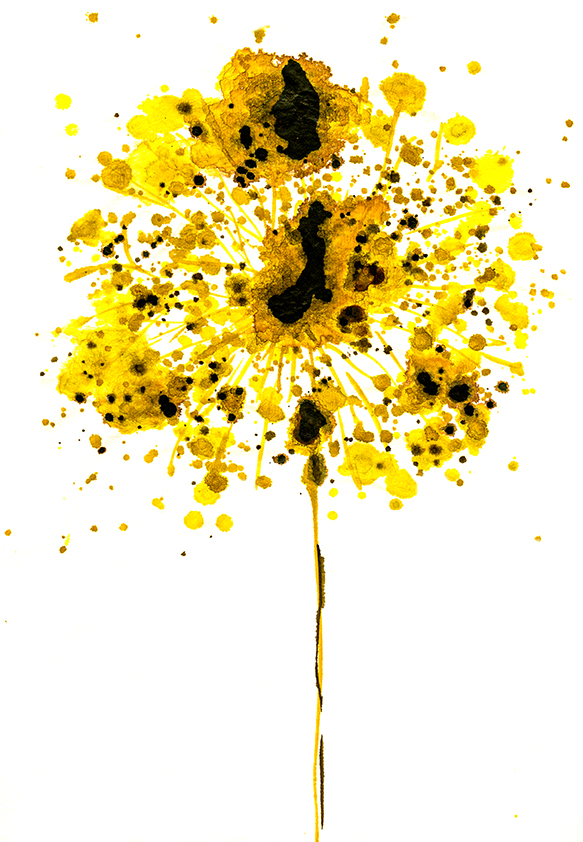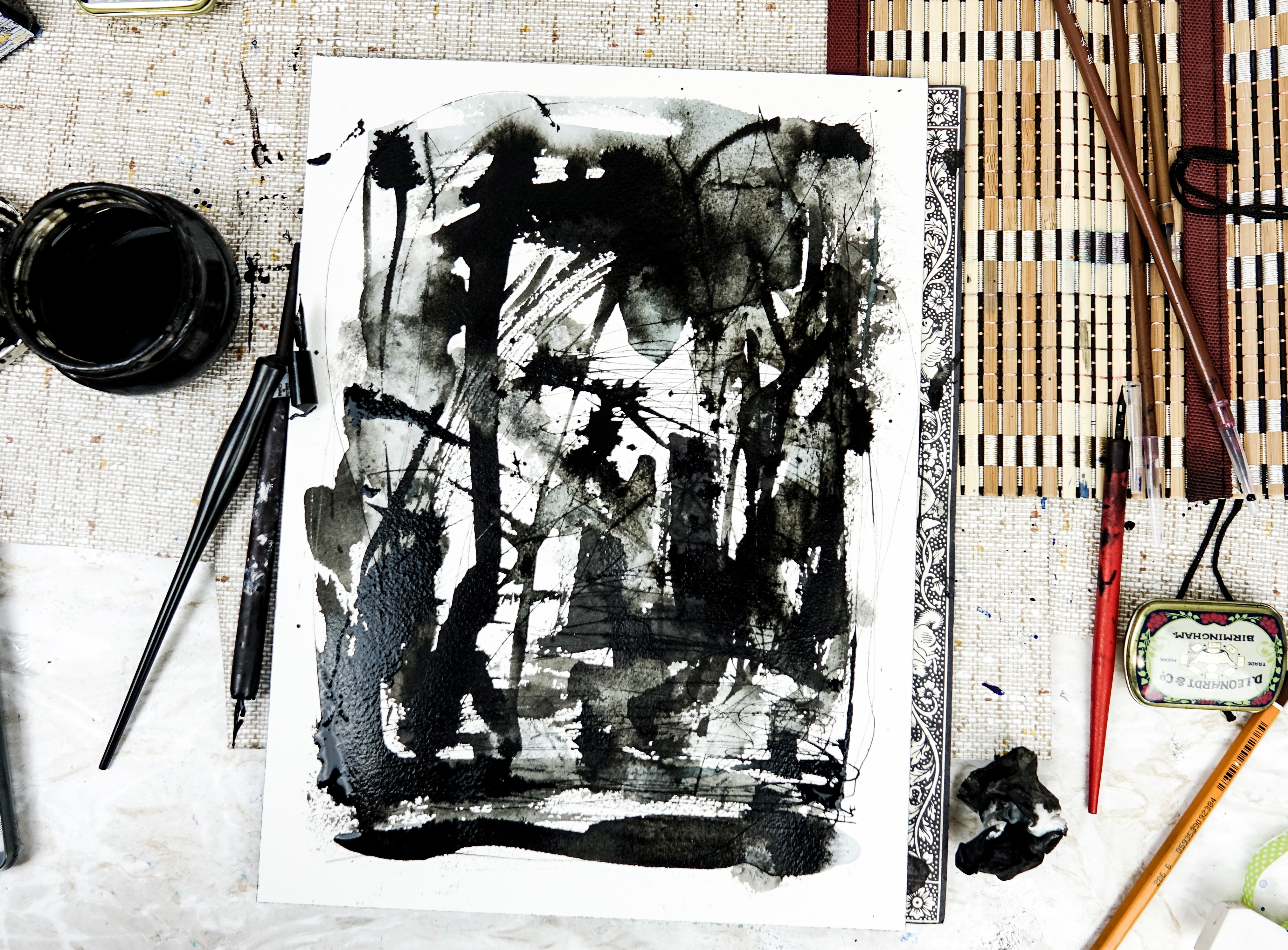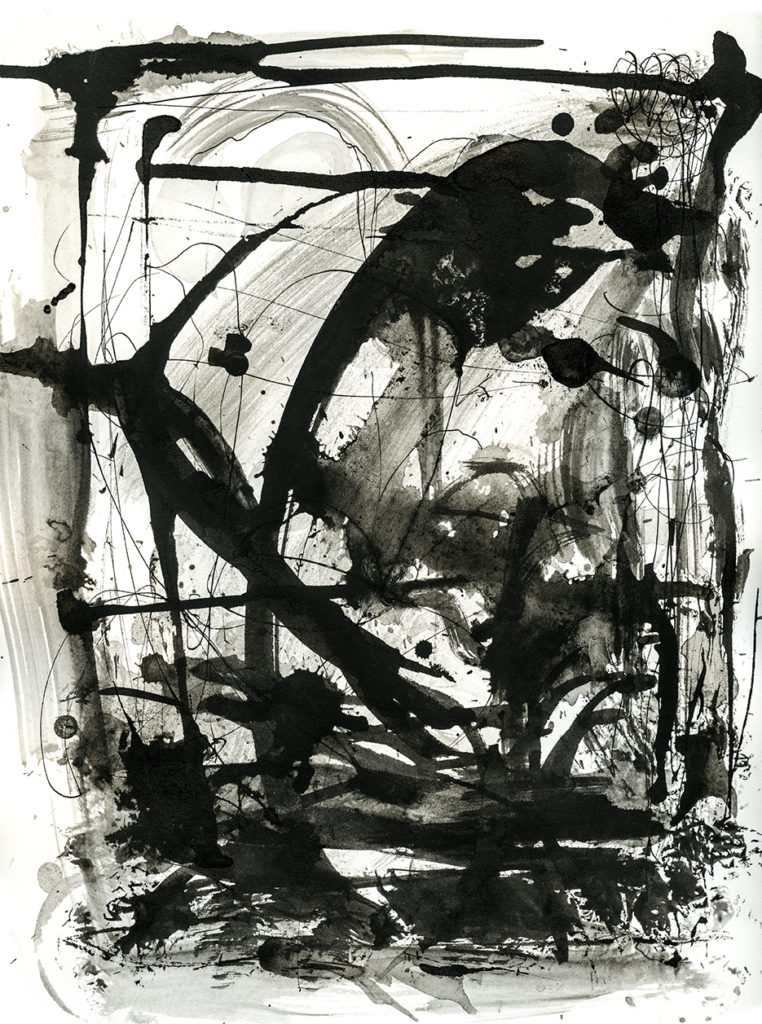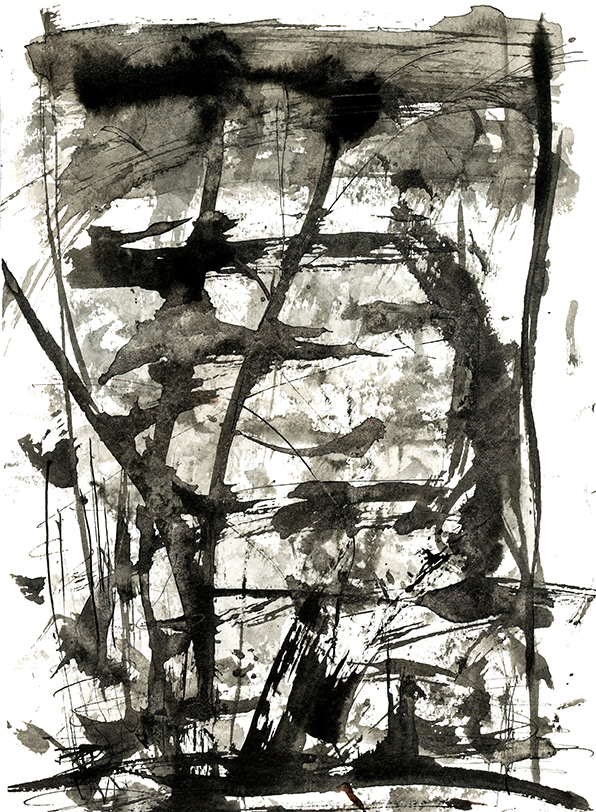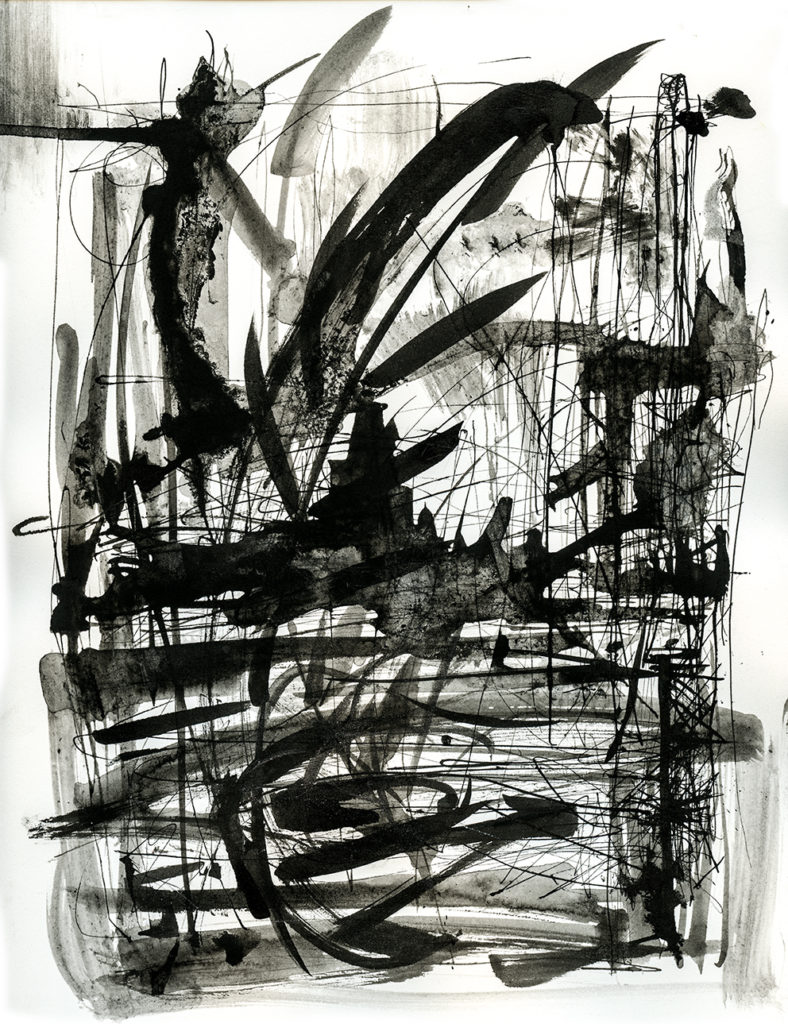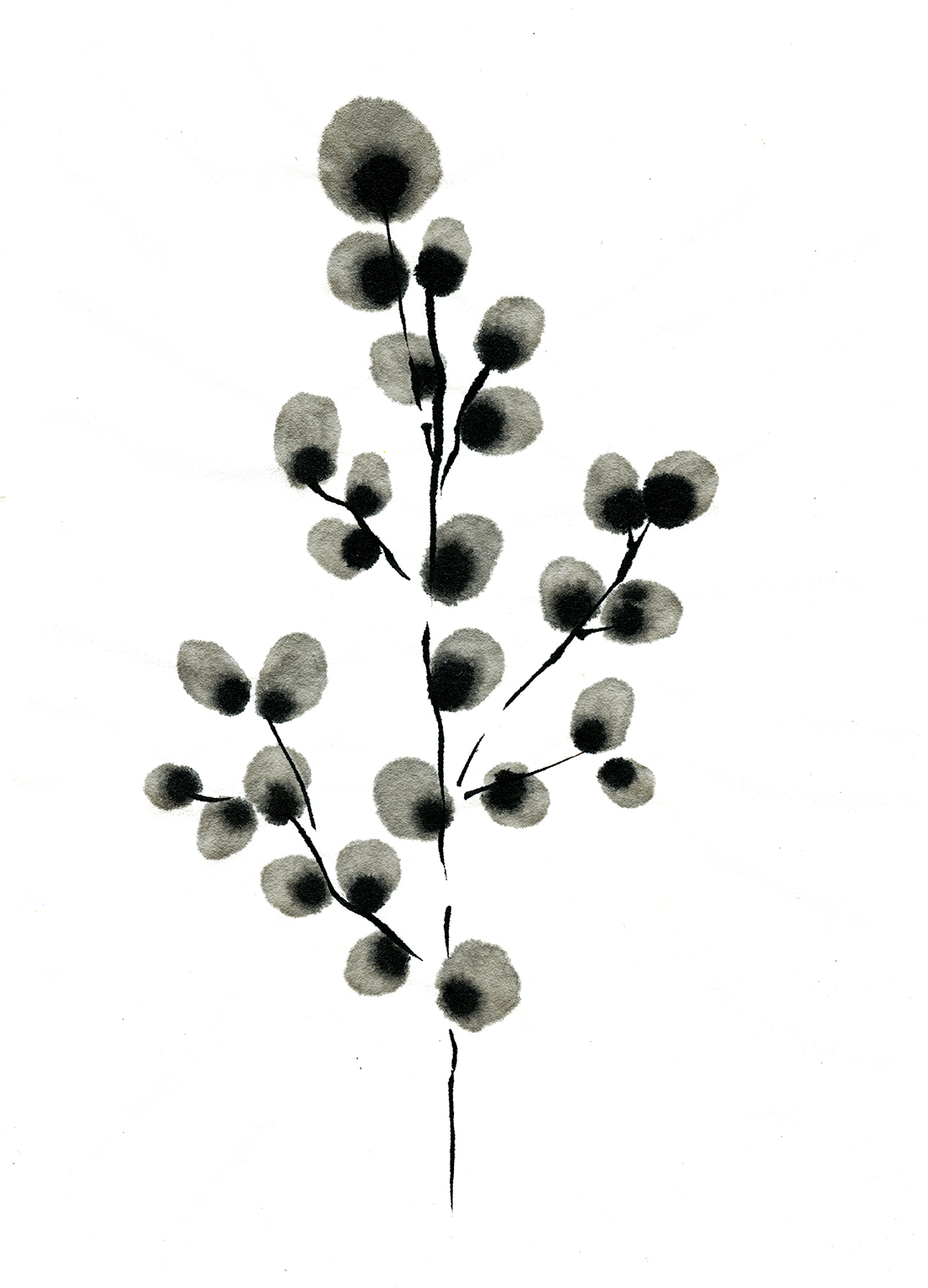
Over the past two years I’ve expanded my artistic practice into ink drawing. I’ll be sharing lots of posts on this over time but I wanted to talk about a wonderful discovery made during this new and continuing phase of my work. So here’s an intro to my adventures in washi rice paper.
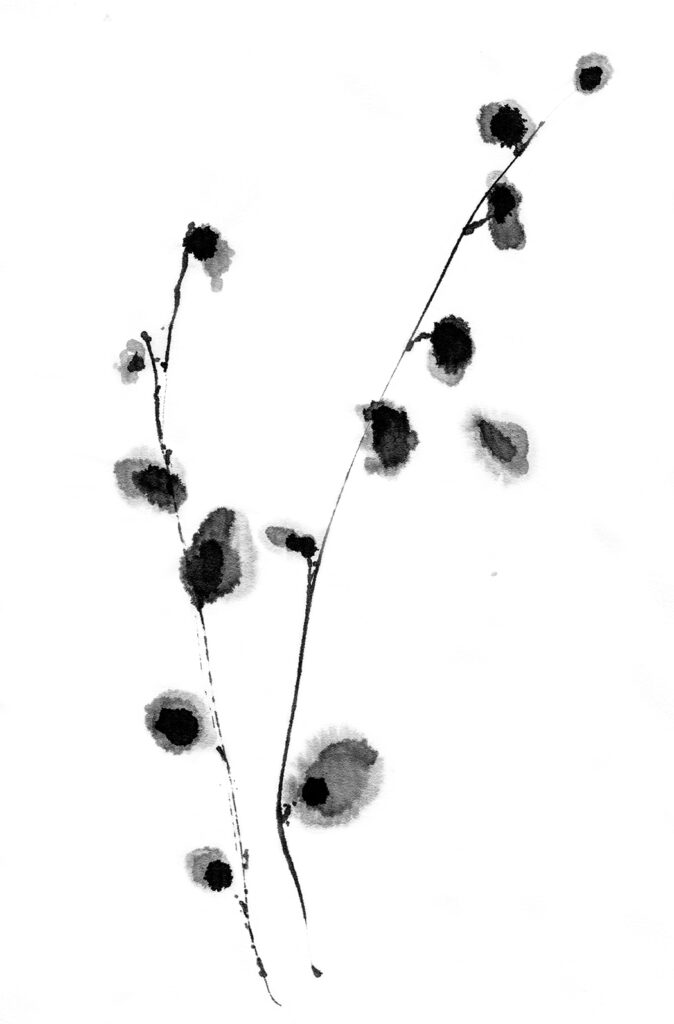
Beautiful, beautiful paper
I have a real love for all kinds of paper, both as an artist and in my ‘other past life’ working as a magazine editor. I can talk for hours about the virtues of weights, textures and paper pressing techniques. Don’t get me on shades of ivory, cream and white!
Normally I have always opted for heavyweight art paper, and for certain works I always will. However, one day, meandering around an art shop in search of some inspiration I saw a pad of 80gsm rice paper and thought ‘hmm, where’s the harm?”. I think I subconsciously needed a new challenge, something to expand my practice and challenge me a little bit.
Now, if you’re not familiar with ‘gsm’ (grams per square metre) a simple guide is something like 80gsm is really thin, fragile and delicate when something like a 300gsm is thick, robust and heavy.
Washi paper and the art of sumi-e
Having already experimented with lots of mark making tools in ink I had already been working with Japanese calligraphy brushes. Another accident really as my sister got me some when she was away in Japan. They are an absolute joy to work with and I am going to write another post concentrating on those, so look out for that.
I wanted to have a go at using the brushes (and some of the traditional ink pens) with this very delicate paper. I decided to record this first foray into working with this super fine surface and you can have a look at the results here.
At the time, in my ignorance, I was calling this paper ‘sumi’, I was completely wrong. The art of sumi-e is the practice not the paper. My bad, I’m always learning.
As you can see in the video the paper is so very delicate and super absorbent. Which means it is completely unforgiving – the mark you make is the mark you make. I love the spontaneity of this, and having bought some more washi rice paper at a range of higher gsm weights, the paper still holds on the ink immediately so you have to work quickly and with conviction.
A moment in time
I love the fact that you have to work quickly on this surface – to be the paper feels like it really captures a moment in time. It sounds silly but I work with this paper with a view that it’s the artistic equivalent of amber. Any little ink drop, drip and accidental ink mark or line is absorbed and preserved. You can also be creative with it and draw with water, before seeing the alchemy that takes place as you touch the water marks with ink.
While you have to work quicky, I have had to think slowly when working on this surface. It’s an incredibly therapeutic process as I have to really consider my marks and be deliberate in your artistic choices. I think this results in very mindful work. Though I started with black ink, I’ve expanded to explore various forms in colour with this paper, again with quite pleasing results.
I am delighted by the spontaneous nature of the pieces I’m also pleased by their quietness. In my opinion they are very gentle, considered pieces and I like this. I feel that the work reflects the contemplation and mindfulness I utilised when making them.
I’ve made both abstract ink works and botanical ink drawings with this practice and I’ve used some of the work I’ve made in this manner for some of my cards and prints.
I’m keen to explore further the creative possibilities of working with what is a relatively new material for me.
I’ll sign off with my latest rice paper video (I’m going to do some more soon) but you can see how I’m progressing…
